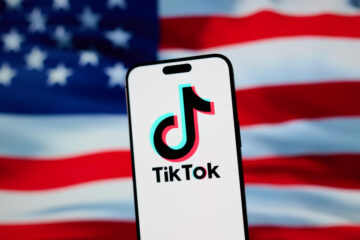The NCAA has been the organization with the power over the amateur careers of college athletes across the country for over a century.
College athletes have competed without pay or compensation for an organization that brings in over a billion in annual revenue. But the advent of NIL in July 2021 has changed the often criticized system as athletes have been able to profit through endorsements and collectives.
On Thursday, May 23, the student athletes took another step forward towards equitable compensation.
The NCAA settled a $2.8 billion class-action antitrust lawsuit that, while still awaiting approval, will payout past student-athletes and would open the door for a revenue-sharing plan that could essentially remove amateurism if student-athletes are to receive salaries.
Related: WNBA viewership dipped for Caitlin Clark’s recent game; here’s what it actually means
“I don’t think amateurism exists anymore, unless you’re at an Ivy League school or one of the military academies,” Columbia University sports management professor Joe Favorito told TheStreet.
Jeff Hoffman, the agent for the Cavinder Twins, told TheStreet that he sees this as a step in the right direction for athletes, but he believes execution will determine much of what will happen next.
But these changes present a tidal wave of questions for the NCAA on how it will move forward. There are questions on how exactly revenue will be distributed among the sports and players, how smaller schools or conferences will be affected by settlement and revenue-sharing, and whether gender equity, which has already been criticized based on opportunity, will trickle into compensation.
“It’s the right thing to do and it’s a start,” Hoffman said. “The challenge is going to set in much more of an executional level like, ‘Oh how are we going to fulfill this?’ This is going to take staff, it’s going to take expense, it’s going to take negotiation.”
For those institutions who do have the means to compete for the top athletes, Hoffman thinks the opportunities presented by NIL — the ability for institutions to offer branding and commercial opportunities — will be the separators at the top.
Hanna (left) and Hayley Cavinder are returning to the University of Miami this upcoming season to play out their fifth and final year. The twins did not play last season.
“Commercial opportunities outside of the settlement will continue to perpetuate and exist and in some cases will drive greater income,” Hoffman said. “So the ability to drive commercial opportunities to an individual, student-athlete, or university specifically will be something which the individual will still be seeking and evaluating in their decision for attending said institution. If you don’t take care of them from a brand exposure and commercial deal standpoint, you’re losing your competitive edge.”
But for those in the middle — the smaller schools and sports — they are expected to be disproportionally affected. Power Five schools in college football should have the financial capacity and manpower to power through any major changes; but the question is what happens to those in the middle.
“When you look at the amount of resignations and retirements by athletic directors who are not amongst the Big Four conferences in the last two weeks, that’s going to be a trend that’s going to continue because if you’re not a major football playing school, you’re going to have serious financial implications going forward to compete on the highest of levels,” Favorito said.
Related: College football could see a massive overhaul because of a plan backed by top execs
Examples of Athletic Directors who have moved away from their posts over the last few weeks include Marquette University’s Vice President and Director of Athletics Bill School, who announced his retirement on May 7, and Portland State University’s athletic director John Johnson, who retired at the end of April.
And while this is positive step for athletes to be compensated for their work, this isn’t going to be beneficial for athletes across the board. There could be fewer opportunities to play, which would, again, disproportionally affect women, smaller institutions, or sports that are not major revenue drivers.
For example, some schools have already been talking about divvying up what sports they will consider varsity sports and what are considered club sports, according to Favorito. The latter sports would not be housed under the NCAA.
“What it means for not the 75 to 100 major football playing schools, but what it means for the other 250 schools is really the biggest question,” Favorito said. “Because there are thousands of individuals who happen to be athletes who are also students who could be affected by this adversely for the sake of the schools that are going to be paying substantial amounts to certain players in certain positions.”
Related: NCAA women earn 99% less TV revenue despite viewership win
There’s a sense that women’s sports could also be disproportionally affected by these changes. While Title IX has allowed for women to achieve in sports, the landmark ruling hasn’t exactly translated to the networks paying out equal value for television rights.
Take for instance the NCAA Women’s March Madness. The media rights deal for the NCAA March Madness tournament, signed in January, valued the Women’s Tournament at $65 million. The Men’s Tournament has a media rights contract worth $1.1 billion annually.
Caitlin Clark and Angel Reese undoubtedly raised the attention seen in NCAA Women’s Basketball.
While the Men’s Tournament did rake in more viewership overall, the Women’s Championship Game saw over four million viewers than the men.
This was the first time the women’s game saw more viewership than the men, but the women’s tournament has also been in an upward trajectory while the men’s has been slacking lately.
This, according to several talking heads, could be attributed to the continuity of the players on the women’s side versus the one-and-done system oft seen in the men’s side.
More sports business:
Nelly Korda should get a shot at the PGA Tour, fellow golfer says. Here’s how it could happenCharles Barkley calls WBD execs ‘clowns’ amid NBA media rights negotiationsMLB players point the finger at Nike, not Fanatics, for uniform fiasco
But this hasn’t — and probably won’t — translate to the television deals and potential player contracts, according to David Berri, an economics professor at Southern Utah University.
“Neither [the men and women] are going to get paid their worth, but the women are going to get paid much worse than the men,” Berri, who wrote about the inequities in women’s sports in his book “Slaying The Trolls,” told TheStreet. “The history of this tells us that that’s how they’re going to do it.”
One of the few consensus opinions across multiple sources is that there is uncertainty about what is going to happen next. And for Favorito, that’s simply predicated on a flawed system finally reaching its breaking point.
“This is a result of years of abuse of the system, which now the courts have shown us that the system was incorrectly set up in the beginning,” Favorito said. “We’re going to see where all this is going to play out.”
Related: Veteran fund manager picks favorite stocks for 2024


